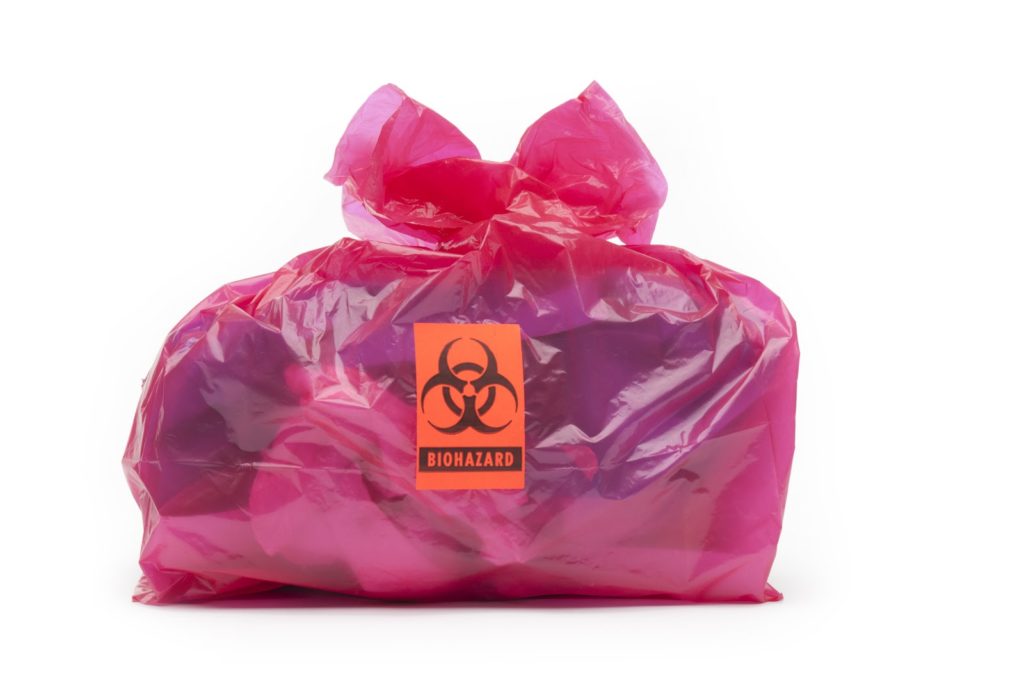Medical Waste Removal Excellence: Your Trusted Partner in Safe Biohazard Disposal
Medical Waste Removal Excellence: Your Trusted Partner in Safe Biohazard Disposal
Blog Article
Discovering Various Waste Disposal Options for a Cleaner Environment
In the search of a cleaner atmosphere, the administration of waste disposal has actually emerged as an essential focal factor for lasting advancement. With a wide variety of waste disposal choices available, varying from conventional garbage dump approaches to ingenious waste-to-energy modern technologies, the option of how we manage our waste has far-reaching effects for our world's well-being.
Recycling Approaches
Carrying out efficient reusing techniques is crucial in reducing waste and promoting sustainability in our atmosphere. Reusing involves the procedure of converting waste products into reusable things to avoid unneeded disposal.
An additional vital recycling technique is composting, which involves disintegrating natural waste like food scraps and lawn trimmings into nutrient-rich soil. This procedure not only diverts natural waste from land fills yet likewise creates a valuable source for gardening and farming. Additionally, upcycling is an imaginative recycling method that includes changing old or thrown out materials into items of higher quality or value. By including these various reusing approaches into our waste management techniques, we can substantially lower our ecological impact and move towards an extra sustainable future.

Composting Strategies
Efficient waste management practices, such as recycling methods, lead the way for a cleaner environment, and currently, changing the emphasis to 'Composting Techniques', we check out sustainable means to decay organic waste for ecological advantage. medical waste removal service.
Composting is an all-natural process that changes organic waste, like food scraps and yard trimmings, into a nutrient-rich dirt change. The secret to successful composting exists in creating the best equilibrium of eco-friendly products, such as vegetables and fruit scraps, and brown products, like dried twigs and fallen leaves. These materials decompose with the help of microorganisms, damaging down the waste right into important garden compost.
There are numerous composting techniques offered to suit different demands. Conventional yard composting entails layering natural products in a container or stack and routinely turning the mix to freshen it. Vermicomposting, on the various other hand, utilizes worms to break down raw material right into garden compost (click here). For those with restricted area, interior composting systems offer a convenient solution. By utilizing composting strategies, we can decrease the amount of waste sent out to landfills while developing a useful product for enriching dirt and supporting plant development.
Incineration Pros and Cons
Incineration, as a waste disposal approach, provides both advantages and downsides that warrant cautious consideration in the realm of sustainable waste management techniques. On the silver lining, incineration can considerably decrease the quantity of waste, minimizing the demand for land fill area and possibly reducing greenhouse gas emissions. Incineration also permits the recovery of power via the generation of electrical energy or warmth, adding to resource recuperation. Additionally, the process can be utilized to ruin unsafe substances, using a secure technique for handling particular kinds of waste that might position risks to public health and wellness and the setting if left unattended.
Furthermore, the high preliminary investment and functional costs of incineration facilities pose economic challenges, making it a much less cost-effective option contrasted to other waste management methods. Mindful surveillance and guideline are important to reduce these negative impacts and make the most of the advantages of incineration as part of a comprehensive waste management strategy.
Land Fill Management Techniques
Garbage dumps play a critical duty in waste monitoring and ecological conservation by offering a control system for the disposal of strong waste products. By compacting the waste, the quantity is lowered, permitting for more waste to be suited over time.
Additionally, the execution of day-to-day cover techniques is crucial in minimizing smells, protecting against clutter, and lowering the tourist attraction of bugs. Treatment the disposed waste at the end of each day helps to have odors and protect against potential environmental contamination. Additionally, the surveillance of garbage dump gas exhausts and leachate levels is important in ensuring that environmental requirements are satisfied which any possible dangers to bordering ecosystems are decreased.

Waste-to-Energy Technologies
Among the innovative methods to waste management entails using Waste-to-Energy technologies to transform solid waste right into functional power sources. Waste-to-Energy (WtE) modern technologies incorporate an array of procedures that aim to extract energy from waste materials with thermal, chemical, or biological ways. This conversion process not only decreases the volume of waste that ends up in garbage dumps yet additionally generates beneficial power resources such as electricity, warmth, or biofuels.
There are numerous approaches of Waste-to-Energy conversion, consisting of pyrolysis, incineration, and gasification. Incineration entails burning waste at high temperatures to generate heat and electrical energy. Gasification transforms waste into a syngas, which can be made use of for Click Here power generation or chemical manufacturing. Pyrolysis breaks down organic products making use of high temperature levels in the absence of oxygen, generating gas, char, and bio-oil.
Implementing Waste-to-Energy innovations can aid alleviate environmental issues associated with traditional garbage disposal methods while all at once offering a renewable resource resource. Nonetheless, cautious consideration needs to be provided to emissions control and making sure the sustainability of feedstock supplies for these technologies to be genuinely advantageous for a cleaner setting.

Conclusion
To conclude, discovering various garbage disposal choices such as recycling, composting, incineration, land fill management, and waste-to-energy modern technologies is vital for advertising a cleaner atmosphere - click here. Each technique has its very own advantages and challenges, however by utilizing a mix of these techniques, we can work in the direction of decreasing the quantity of waste that finishes up in landfills and eventually add to a more sustainable future for generations to find
With a wide variety of waste disposal alternatives available, ranging from conventional garbage dump techniques to cutting-edge waste-to-energy technologies, the option of just how we manage our waste has far-reaching implications for our planet's well-being. medical waste removal service.Incineration, as a waste disposal technique, offers both benefits and disadvantages that warrant mindful factor to consider in the realm of lasting waste management practices.Landfills play a vital duty in waste management and environmental conservation by giving a control system for the disposal of strong waste products. By condensing the waste, the quantity is lowered, permitting for even more waste to be suited over time
One of the cutting-edge strategies to throw away administration includes taking advantage of Waste-to-Energy modern technologies to transform solid waste into useful energy sources.
Report this page